Luis-Gil Moreno-Jiménez
A Preliminary Study for Literary Rhyme Generation based on Neuronal Representation, Semantics and Shallow Parsing
Dec 25, 2021

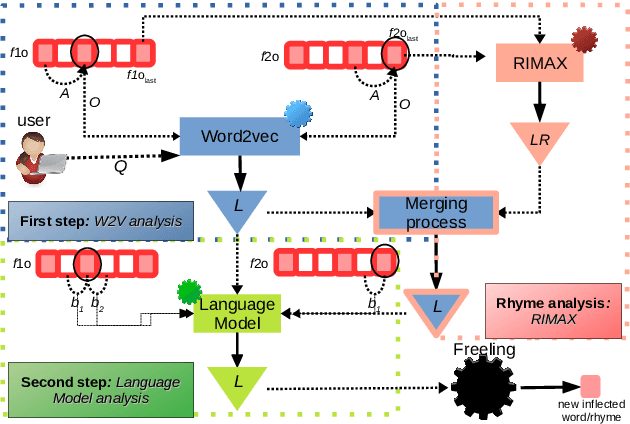
Abstract:In recent years, researchers in the area of Computational Creativity have studied the human creative process proposing different approaches to reproduce it with a formal procedure. In this paper, we introduce a model for the generation of literary rhymes in Spanish, combining structures of language and neural network models %(\textit{Word2vec}).%, into a structure for semantic assimilation. The results obtained with a manual evaluation of the texts generated by our algorithm are encouraging.
* 7 pages, 2 figures
LiSSS: A toy corpus of Spanish Literary Sentences for Emotions detection
Jun 06, 2020
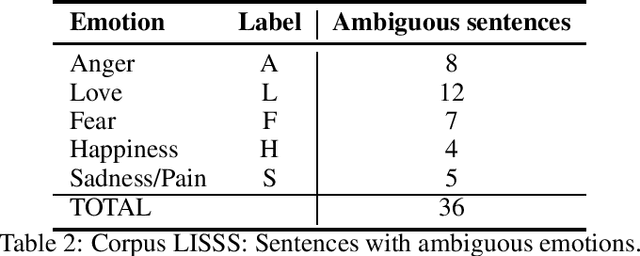
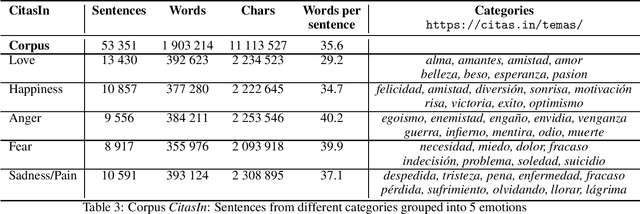
Abstract:In this work we present a new small data-set in Computational Creativity (CC) field, the Spanish Literary Sentences for emotions detection corpus (LISSS). We address this corpus of literary sentences in order to evaluate or design algorithms of emotions classification and detection. We have constitute this corpus by manually classifying the sentences in a set of emotions: Love, Fear, Happiness, Anger and Sadness/Pain. We also present some baseline classification algorithms applied on our corpus. The LISSS corpus will be available to the community as a free resource to evaluate or create CC-like algorithms.
Generación automática de frases literarias en español
Jan 17, 2020
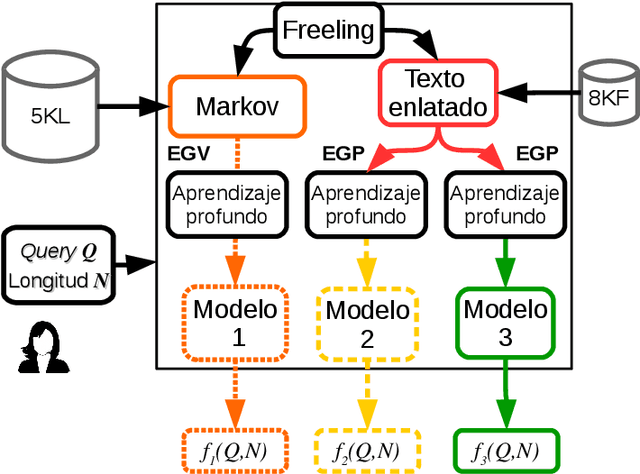

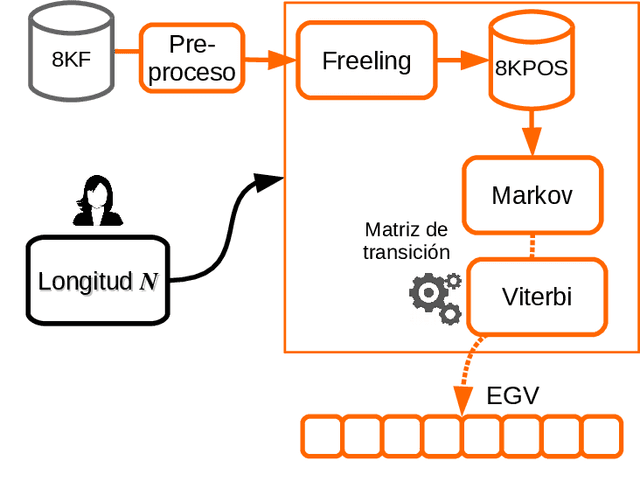
Abstract:In this work we present a state of the art in the area of Computational Creativity (CC). In particular, we address the automatic generation of literary sentences in Spanish. We propose three models of text generation based mainly on statistical algorithms and shallow parsing analysis. We also present some rather encouraging preliminary results.
 Add to Chrome
Add to Chrome Add to Firefox
Add to Firefox Add to Edge
Add to Edge